According to statistics, 8 out of 10 people suffer discomfort and pain in the spine. Although most do not believe that this can be associated with any pathology, attributing the reasons to the characteristic inconveniences associated with the course of life.
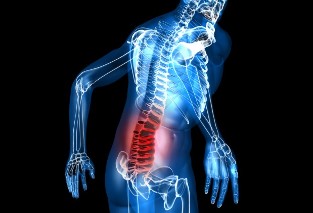
What is osteochondrosis?
Osteochondrosis is a degenerative dystrophic disease with a complex cartilage lesion in the spine. In cases of the development process, it can spread to bone cells and tendons. Strong stress on the spine can lead to the development of this disease.
Lumbar osteochondrosis occurs in the coccyx area, has a short-term nature and an acute painful effect.
Osteochondrosis of the lumbar spine
Lumbosacral osteochondrosis in diagnosis has a definition when the elasticity disappears in the intervertebral discs, the cartilage is erased and deformed. Ligaments and adjacent vertebrae also go into the deformation process over time. Restriction of movement due to a sensation of pain in the back and legs is considered characteristic.
Most often, such osteochondrosis manifests itself in the thoracic and cervical spine due to the load on the sacrum and lower back. Such defects are possible with regular sports activities and congenital specificity.
According to ICD-10, lumbosacral osteochondrosis has the codes M42, M91-M93 - connective cell diseases and has the following types:
 Polysegmental: considered a common and dangerous disease, pathological processes take place in various segments of the spine and in its various parts. The absence of treatment leads to complications because of this, you need to diagnose and start treatment on time.
Polysegmental: considered a common and dangerous disease, pathological processes take place in various segments of the spine and in its various parts. The absence of treatment leads to complications because of this, you need to diagnose and start treatment on time.- Erosive: This is a progressive type of injury to the intervertebral discs that has a character with severe symptoms. The course of the disease is monitored by computed tomography or x-rays. The main criterion is the retention of the sclerosed annular plaques.
- Warp: it means a permanent pathology of the joints, in this sense, a degenerative inflammatory process develops. This process destroys the structure of the joints and leads to rapid aging. Excessive exercise is the cause of this pathology, although it may depend on other factors.
Treatment and rehabilitation
Medications
Chondroprotectants are mainly used in the treatment of the lumbar spine, which are available in the form of tablets and injectable solution. For positive use, a regimen of various forms of drugs is required. The use of injections is carried out in a significantly short time and is also considered painful due to the injection of an injection directly into the spine.
Additionally, these medications have anti-inflammatory side effects such as nausea and skin rashes.
In the treatment of the lumbar sacral spine, non-steroidal drugs (NSAIDs) are used, which have anti-inflammatory effects and indications for their use in chronic forms and in acute pain.
The combined intake of vitamins, chondroprotectants, and glucosamine also promotes recovery.
Blockage in osteochondrosis
For severe pain that interferes with normal sleep,blocker drugis used. Such treatment is used in all types of localization of osteochondrosis.
This app only temporarily relieves pain, the drug is injected through a puncture with a syringe into the spine. The commonly used therapeutic block is performed with a strong pain reliever.
Physiotherapy
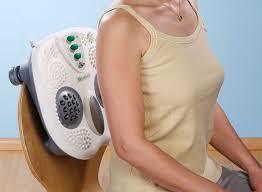
Physiotherapy treatment consists of reducing pain and inflammation:
- Exposure to vibrations with vibratory massageis the main method of physiotherapy.
- Ultrasound therapy is also used, it allows to treat the manifestations of pain, it has three factors that affect the body: thermal, physical and chemical, mechanical.
- Darsonval Physiotherapyis performed by supplying current to the skin through a vacuum electrode. When exposed to ionization with air, a weak electrical discharge appears. With increased voltage and secondary ionization of the air, a stronger discharge occurs.
Massage
When the blood vessels of the spinal cord are compressed, asymmetry of the articular muscles appears. Compaction occurs in the area of deformation, accompanied by spasms, pain and scarring of muscle tissue.
Massage promotes:
- decreased pressure on the arteries of the nerve roots;
- the spasms disappear;
- improves the activity of the vertebrae;
- blood circulation is normalized;
- slows down tissue breakdown;
- prevents the development of the disease;
- prevents muscle wasting and restores tone.
Improves the well-being of patients in general, in the early stages with the use of massage combined with other methods, the symptoms disappear.
Magnetotherapy
Magnetic field treatment is used to eliminate exacerbation of osteochondrosis. With this treatment pain disappears, blood circulation is normalized, muscles are relaxed and the nutrition of the intervertebral discs is improved.
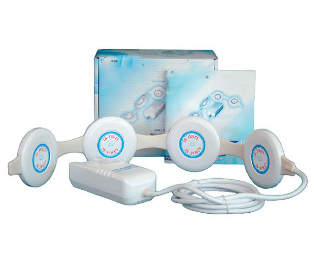
The procedure is applied with exacerbation, as well as in all stages of the disease, using stationary devices, also portable, when used at home.
Manual therapy and acupuncture
The manual therapy method consists of jerky movements with the help of the hands to regain mobility through different techniques:
- The manipulation techniqueincludes a slow and measured extension of the spinal joints associated with versatile bends and twists.
- Gentle techniqueis considered to be aimed at relaxation to gradually reduce pain and relax the muscle corset.
The acupuncture therapy method based on the study of biological zones and exposure to them with needles deserves special attention. Reduces the patient's need for anti-inflammatory drugs and pain relievers.
Physiotherapy exercises
Sports procedures for osteochondrosis are considered necessary, but taking into account all stages of the disease, you should carefully select physical exercises:
- Classes on vertebral simulatorspromotes the treatment of curvature of the spine, scoliosis, kyphosis, herniated discs and strengthening of the muscular corset.
- Therapeutic exercises in the poolproduce good results and are considered safe without injury. During 30-45 minutes of water procedures, without much effort, complete muscle relaxation is achieved. These activities can improve mood and normalize sleep. Experts also recommend swimming to strengthen the lower back muscles.
- Walking with osteochondrosisis necessary in this sense, the Scandinavian walk is used, recognized by experts as effective. Due to the posts, the load is evenly distributed on the shoulder girdle and arms, reducing pressure on the joints and spine.
It is contraindicated to participate in any sport such as:
- Tennis.
- Discus throw.
- High jumps.
- Frequent sports activities.
The same contraindications are used for osteochondrosis when:
- Intervertebral hernia in the lumbar spine.
- In the exacerbation stage.
Swimming is possible with the permission of a doctor or under the supervision of an instructor.
Exercises
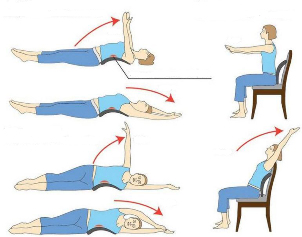
When doing medical gymnastics, problem areas are exposed to stress so as not to damage them and return them to their normal shape:
- You need to lie on a flat floor,place one palm of your hand on your stomach and the other just on your chest. With a gentle inhalation, the stomach should first rise, then the chest, slowly exhale. You need to repeat it 10 times during the day 4-3 times.
- Lie on your stomach, raise your headand, after placing emphasis with your hands in front of you, hold your body in this position for 1-2 minutes. Then slowly take the starting position, the exercise is repeated 3-4 times a day.
- Open the top of the backrestthe back of the chair slowly lean back as you take a deep breath. Then lean forward as you exhale, do this exercise 4 to 5 times.
- For the lower back- stand up, place your hands on your hips, gently lean back and forth and to the sides. Then do slow movements with the pelvis back and forth, repeat 10 times in each direction.
Yoga and Pilates
The use of yoga or Pilates involves the smoothness and precision of one movement gradually flowing into another. It is necessary to mentally control the state of the muscle in each pose.
Deep breathing promotes relaxing and calming effects, similar to yoga:
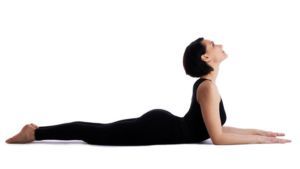
- In a standing position while inhaling, raise your arms above youand while exhaling, lean toward your right foot and tap. Repeat the same action with a bend towards the left leg. In this case, keep your back straight, done in 2 minutes.
- Exercise cobra- lie on the palm of your chest, place it on your hands to get up while inhaling, having thrown your head back. Keep your arms straight, your breathing should be smooth, your chest is open and stay in this position for 20 seconds.
- Turn your head to the right and to the left,will stay for 10 seconds, then tilt your head down, trying to reach the jugular cavity with your chin, stay a while, then tilt thehead back and stay. Repeat the exercise for 5 minutes.
Orthopedic aids
Orthopedic devices for correction of the spine are indicated for osteochondrosis:
- Orthopedic corset- used in the treatment of weakened muscles, without restricting movement and protecting against displacement of the intervertebral discs, and also serves to restore the spine. After the first application, due to fixation, relief comes, spasm and pain subside.
- Pillow: reduces the load on the lumbar region by unloading the pelvic organs. The brace reduces pain, maintains muscle tone, and reduces vibration. There is another type of pillow device designed for the cervical spine during sleep.
Author's Methodology by Dr. Bubnovsky
Everyone, regardless of occupation and age, can apply Dr. Bubnovsky's method. After diagnosis, the doctor prescribes an individual method of treatment, taking into account the nature of the localization and pain.
Gymnastics according to this method is performed independently or in multifunctional simulators under the supervision of a specialist. That allows you to purposefully distribute the load to specific muscle groups, while helping to relieve swelling, pain, and spasms.
What can and cannot be done with osteochondrosis?
To prevent a relapse, people with osteochondrosis try different treatments. In this case, you need to give up the usual things, while you can leave the heating in the bathroom.
The bath favors a good warm-up and stimulates the physiological processes with which tension, swelling and pain are reduced. It is recommended to stay in the steam room for no more than 10 minutes at a time and take a break at the same time.
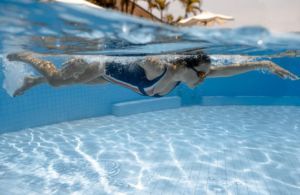
You can also use:
- Massage.
- Yoga.
- Swim.
- Sports.
What is not recommended for osteochondrosis:
- Lift weights.
- Overeating.
- Wear uncomfortable shoes.
Treatment with folk remedies at home
To treat osteochondrosis at home, you can use alternative methods in conjunction with traditional treatment:
- Propolis: for this, you must spread it in the form of a thin cake, cut the required size for application on the affected part. Fix in this area and maintain for 1-2 days the procedure is carried out with a 12-hour break until the pain disappears completely.
- leeches: the essence of prevention is to relieve pain caused by the outflow of venous blood that stagnates and causes inflammation. Leeches bite the skin in the affected area and suck blood, inject Hirudin, which has a healing effect and improves the course of biochemical processes.
- Mumiyo- is used in diseases of the musculoskeletal system, has a stimulating, regenerating and anti-inflammatory effect. For osteochondrosis, compresses of 300 mg are used. Dissolve the mumiyo in a glass of water, then make compresses.
- Mustard dressings: have warming healing properties. With the expansion of blood vessels and has the ability to disperse blood, while increasing the flow of useful elements and oxygen. They also relieve the sensation of pain and inflammation, improving the condition of the intervertebral discs.
The Kuznetsov applicatorhas a fairly simple structure, it includes plastic plates with spikes, which are fixed on a solid base. Depending on the basis of the pain, the applicator has a different shape - flat mat, roller or belt with fasteners.
It also has accessories with spikes and magnetic elements. The size of the pins is 2 to 5 mm, the middle length is 2 to 8 mm.
Prevention of lumbar osteochondrosis
Neurologists with acute osteochondrosis recommend swimming exclusively in pools because there is a current in the natural reservoirs that will increase the load on the spine. The water temperature should be 30 degrees, then you can lower it to 23, and depending on the disease, a swimming style is chosen.
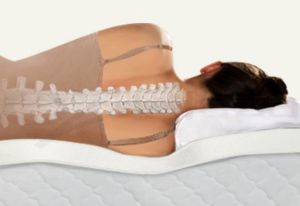
Also in prevention you must follow the rules of adequate sleep, which include:
- choose the right mattress;
- medium hard flat base;
- orthopedic pillows;
- the correct diet, which includes the use of foods with vitamins C, PP, E, B3.
Rules for sitting: This requires a soft chair or chair, while the weight of the body will not create pressure on the lower back. The body itself should be on the ischial tubercles, which is only possible on hard seats.
Hospital - with osteochondrosis of the lumbar region
The sick leave and its duration depend on the complications and the nature of the disease course:
- Pain syndrome.
- The disease caused immobility.
- Working conditions and profession.
- Also the treatment prescribed by the doctor.
- With radicular syndrome, it can last up to 3 weeks.
- In case of complications, more than six months.
- Lumbar osteochondrosis: depends on the localization site, the severity of the pain syndrome due to complications and lasts at least a week.
Hospital treatment is prescribed in severe cases, after which the doctor recommends a change of occupation.



































